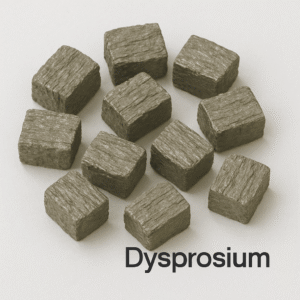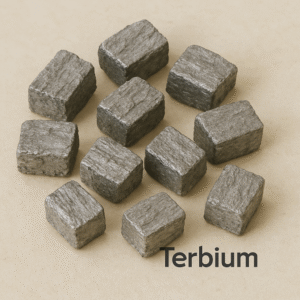Your cart is currently empty!
Lutetium (Lu)
Basic Information Element Name: Lutetium Symbol: Lu Atomic Number: 71 Atomic Weight: 174.97 Element Category: Lanthanide (often considered a transition metal as well) Standard State: Solid Appearance: Silvery-white, dense, and hard metal Chemical and Physical Properties Density: 9.84 g/cm³ (highest among lanthanides) Melting Point: 1,663 °C (3,025 °F) Boiling Point: 3,402 °C (6,156 °F) Electronegativity […]
Description
Basic Information
-
Element Name: Lutetium
-
Symbol: Lu
-
Atomic Number: 71
-
Atomic Weight: 174.97
-
Element Category: Lanthanide (often considered a transition metal as well)
-
Standard State: Solid
-
Appearance: Silvery-white, dense, and hard metal
Chemical and Physical Properties
-
Density: 9.84 g/cm³ (highest among lanthanides)
-
Melting Point: 1,663 °C (3,025 °F)
-
Boiling Point: 3,402 °C (6,156 °F)
-
Electronegativity (Pauling scale): 1.27
-
Oxidation State: +3 (dominant)
-
Magnetism: Paramagnetic
Reactivity and Storage
Lutetium is relatively stable in dry air but forms an oxide layer when exposed to moist air. It reacts slowly with water and dissolves in acids. Due to its high melting point and resistance to corrosion, it is suitable for high-temperature applications. For storage, it is typically kept in sealed containers or under inert gas to prevent oxidation.
Occurrence and Production
Lutetium is the rarest and most expensive of all stable lanthanides. It is found in trace amounts in minerals such as monazite and xenotime, alongside other rare earths. Its separation is complex due to its similarity to neighboring elements and is typically achieved by ion-exchange or solvent extraction methods.
Isotopes
-
Natural lutetium is composed of two isotopes:
-
Lu-175 (stable, ~97.4%)
-
Lu-176 (radioactive, ~2.6%, half-life: 37.8 billion years)
-
-
Lu-177, a synthetic isotope, is widely used in cancer therapy.
Key Applications
1. Nuclear Medicine & Radiotherapy
-
Lutetium-177 (Lu-177) is used in targeted radionuclide therapy for prostate and neuroendocrine cancers.
-
Emits β-particles to destroy tumor cells with high precision.
-
Lutetium metal is used as the precursor for Lu-177 production in reactors.
2. PET Imaging and Scintillators
-
Lutetium is a key component in crystals like Lu₂SiO₅:Ce (LSO) and LuAlO₃:Ce (LuAP).
-
These scintillators are used in positron emission tomography (PET) scanners due to their:
-
High density
-
Fast decay time
-
Excellent energy resolution
-
3. Catalysis
-
Lutetium-based catalysts are used in organic chemical transformations and petroleum refining.
-
Effective in alkylation, hydrogenation, and polymerization reactions.
4. High-Refractive Index Glass and Optics
-
Lutetium compounds are used to produce specialty glass with high refractive index and good transmission in infrared wavelengths.
-
Applied in precision lenses, infrared optics, and fiber laser components.
5. Laser Host Materials
-
Lutetium aluminum garnet (LuAG) doped with rare earth ions is used as a laser host crystal.
-
Offers excellent thermal conductivity and optical stability under high-power laser operations.
6. Scientific Research
-
Lutetium is used in studies involving nuclear structure, heavy ion physics, and geochronology.
-
Lu–Hf dating is a method used in geochemistry to study the age of rocks and meteorites.
Interesting Facts
-
Discovered independently in 1907 by Georges Urbain (France), Carl Auer von Welsbach (Austria), and Charles James (USA).
-
The name comes from Lutetia, the Latin name for Paris.
-
Lutetium was long confused with ytterbium due to similar chemical behavior.
-
It is the last element in the lanthanide series and is sometimes classified as a d-block transition metal.
Additional information
| Weight | 1 lbs |
|---|---|
| Dimensions | 1 × 1 × 1 in |
| Weight | 100G |
-
Cerium (Ce)
$257.00 -
Dysprosium (Dy)
$670.00 -
Erbium (Er)
$174.00 -
Europium (Eu)
$1,550.00 -
Gadolinium (Gd)
$106.00






